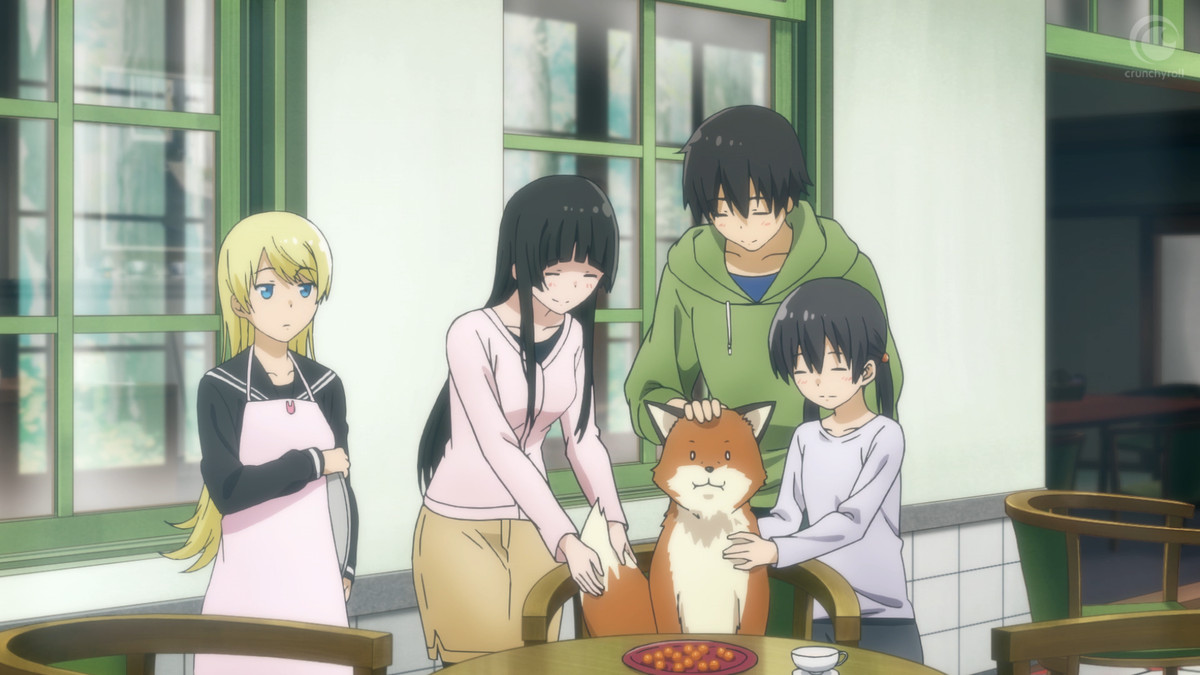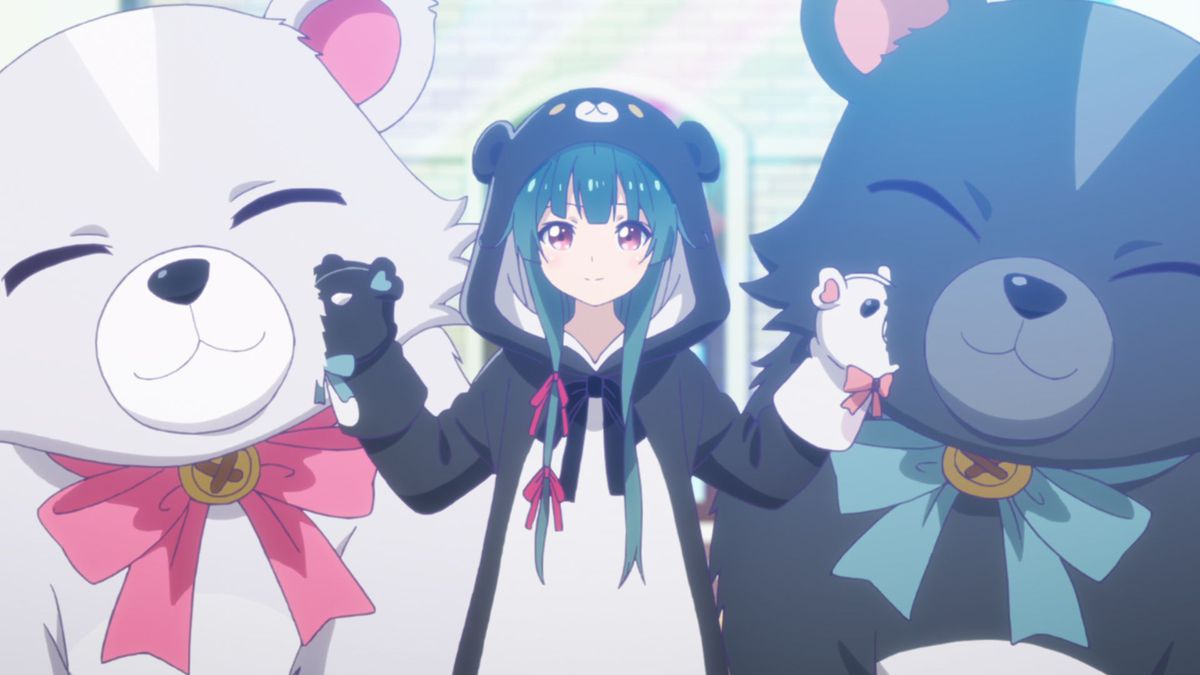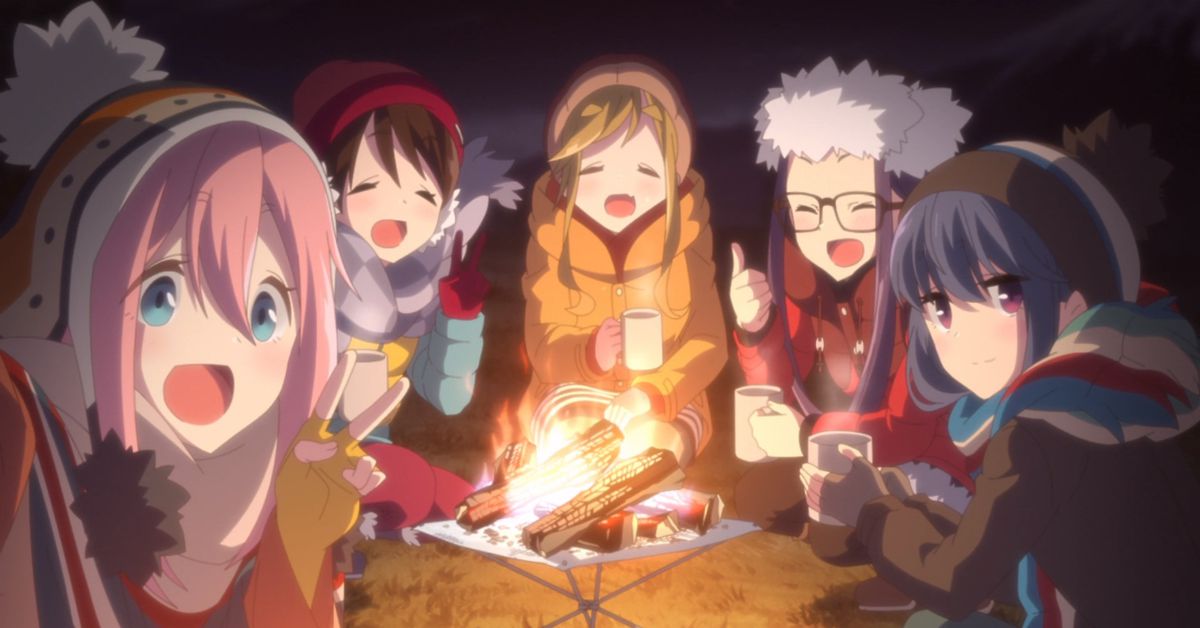Anime girls face many expectations. Audiences want to see them be soft, sweet, funny, relatable, and of course, super-sexy. Their storylines require them to be hyper-competent, hard to get (yet constantly pining for love), and again, super-sexy. Often they’re expected to be all of the above while also saving the world. Is there no justice for the waifus? When will it end?
Apparently, now. A growing number of shows, particularly in the iyashikei or “healing” genre of anime, are finally freeing their female protagonists from these outlandish pressures, and even better, taking their relationships seriously. In signature series for the genre, like Flying Witch and Tamayura Hitotose, the focus shies away from action and romance, in favor of meaningful connections with family and friends, and finding joy in the minutiae of life.
Iyashikei anime certainly isn’t new, but it is seeing an increase in popularity, thanks to its much-needed soothing effect on viewers. The genre first emerged as a response to the trauma following the Kobe earthquake and Tokyo sarin attack in 1995, when audiences craved a sense of safety from fiction. While iyashikei can include works that feature elements of action or fantasy, the focus tends to be smaller and more mundane, and there’s a heavy emphasis on visually stunning settings.
Many of the calm storylines, while charming, are unfortunately dismissed as “cute girls doing cute things,” as is often the case for the series Non Non Biyori. Other series are considered domestic fantasy fulfillment for men, like The Helpful Fox Senko-san. While a key part of iyashikei is the sense of serenity it imparts on viewers, relying on female characters to provide this emotional impact without granting them interiority subjects them to the same expectations they face in other genres.

The pressure to be cute and helpful is not going to immediately dissipate for our two-dimensional leading ladies. But series that allowed their female protagonists calm agency have been around since the 1990s, even if this particular kind of onscreen empowerment was rare.
While the action-packed magical girl powerhouse Sailor Moon helped popularize anime in North America, 1998’s Yokohama Shopping Log provided a calm counterbalance, even if Western audiences were largely unaware of it at the time. Studio Ghibli’s films (particularly My Neighbor Totoro) throughout the years helped establish iyashikei’s appeal, while proving that stories about women’s lives have commercial viability. The low-key hangout anime series Azumanga Daioh brought these efforts into the early 2000s, with an ensemble of high-school girls going about their (mostly) normal lives, with a hefty dose of surreal humor to boot.
With the foundation laid and demand on the rise, it’s becoming increasingly acceptable for shows to let their young women explore life safely, and find fulfillment on their own terms. Kuma Kuma Kuma Bear and Adachi and Shimamura are two incredible examples that recently wrapped their first dubbed seasons. Laid-Back Camp (currently only available subtitled) takes the chill vibes to the next level.
Kuma Kuma Kuma Bear (streaming on Hulu and Funimation) starts out with a tried-and-true isekai storyline where the protagonist, Yuna, is transported into the world of her favorite video game. But rather than fighting to get back to the real world, or pursuing in-game clout, she simply enjoys life and seeks out good food. In spite of her somewhat selfish motives, her quests often improve the lives of other residents of the game, many of whom seem to be NPCs. By turns funny and sweet, the series holds extra appeal for anyone fond of found-family tropes and deliciously drawn culinary delights.

Adachi and Shimamura (on Funimation) is a more traditional slice of life, with just a touch of romantic angst and a few surreal side stories to keep things interesting. The protagonists, Sakura Adachi and Hougetsu Shimamura, are two high-school slackers who strike up a friendship while skipping class. Gradually, their connection develops into something more. It’s essentially the antithesis to the classic anime Inuyasha: there are no sacred items to be recovered, no action-packed fights with powerful demons, and certainly no dramatic screaming of each other’s names during fights and professions of love. Instead, Adachi and Shimamura devotes multiple episodes to shopping for gifts at uncrowded malls.
Laid-Back Camp (on Crunchyroll) is exactly what it sounds like: a series about girls going camping. It’s effectively Azumanga Daioh in the woods, with even more stunning background art and serene, food-focused plots.
Without the drama of evil forces to overcome, or even the grand and troubled romances of fan favorites like Fruits Basket, some people might find these series boring. But the beauty is in the lack of conflict: knowing that everything is and will be all right for the characters creates a profound sense of relief for viewers. If Fruits Basket is the media equivalent of a post-breakup crying jag, iyashikei’s vibes are far more like falling asleep under a weighted blanket next to someone you love.
Rather than the plot relying on constant drama for the story to progress, the focus is on the characters’ interactions and ideas. In Kuma Kuma Kuma Bear, this plays out with Yuna solving problems for communities in a video game world while developing closer friendships than she ever had in the real world. In Azumanga Daioh, the ensemble’s cast simply lives out their daily lives, with the comedy coming from their interactions and interpretations (or misinterpretations) of those interactions. In Laid-Back Camp, the scenery is so gorgeous that even with the fairly minimal plot, it’s still a joy to watch.

Image: C-Station
Stylistically, iyashikei also tends toward bright secondary colors, elaborate backgrounds, montages with cheerful music, and voiceover used for characters to reflect on their feelings, rather than to react to their opponent’s latest fight move. Character design shows a heavy influence from traditional shojo aesthetics, with “cute” styles that focus on large eyes and fashionable clothing, rather than unrealistic outfits or exaggerated anatomy. Communication tends to be more straightforward as well. There are still misunderstandings between characters, but mostly for comedic effect.
Rather than indulge in the more typical tsundere dynamic, characters are far more likely to gently and easily share their true feelings, whether those are focused on friendship, romantic interest, or a more familial love. While there can still be some buildup and angst to these confessions, it’s clear to the audience that the sentiment will be reciprocated, and the characters should feel safe to express themselves.
While the high-stakes worlds of most popular anime series are full of epic battles and angst-filled relationships, meant to drive endless excitement and emotional engagement, sometimes the intensity is just too much. There’s plenty of joy to be found in simply watching characters live their lives. Enjoying peaceful scenery, following slow-burn relationships that develop in their own time, and taking genuine delight in the absurdity of existence provides a unique type of escapism that’s desperately needed in an overstressed, overstimulated world. The timing is right. These calm portrayals of women’s lives and relationships are only going to become more frequent and popular.
An open world stands before us, one with stories that reassure us that it’s OK to just exist, to appreciate other people, and to take in the world around us. And one where anime girls can, at long last, finally chill.
Polygon – All
Source link
Related Post:
- River City Girls Zero and River City Girls 2 Announced
- New Mass Effect Legendary Edition Mod Gives The People What They Want, “Juicy” Sexy Hanar
- Fall Guys has never been better with friends than it is now, and that’s thanks to Squads • Eurogamer.net
- Crapshoot: The Russian Leisure Suit Larry with a ‘sexy’ Tetris minigame
- Sexy villains: Why Loki, Kylo Ren, and vampires are allowed to be hot
- Narcissus Performs Sexy Dance in His SMT V Video
- Genshin Impact Shows More of 2.0, Inazuma, the New Characters, & More in New Gameplay & Footage
- Star Wars anime Visions trailer, studios, release date announced at Anime Expo
- New Azur Lane Console Game Announced; New Major Event With Plenty of Shipgirls, Anime, & More Revealed
- Pokétoon Anime Short Shows a Magikarp’s Journey
